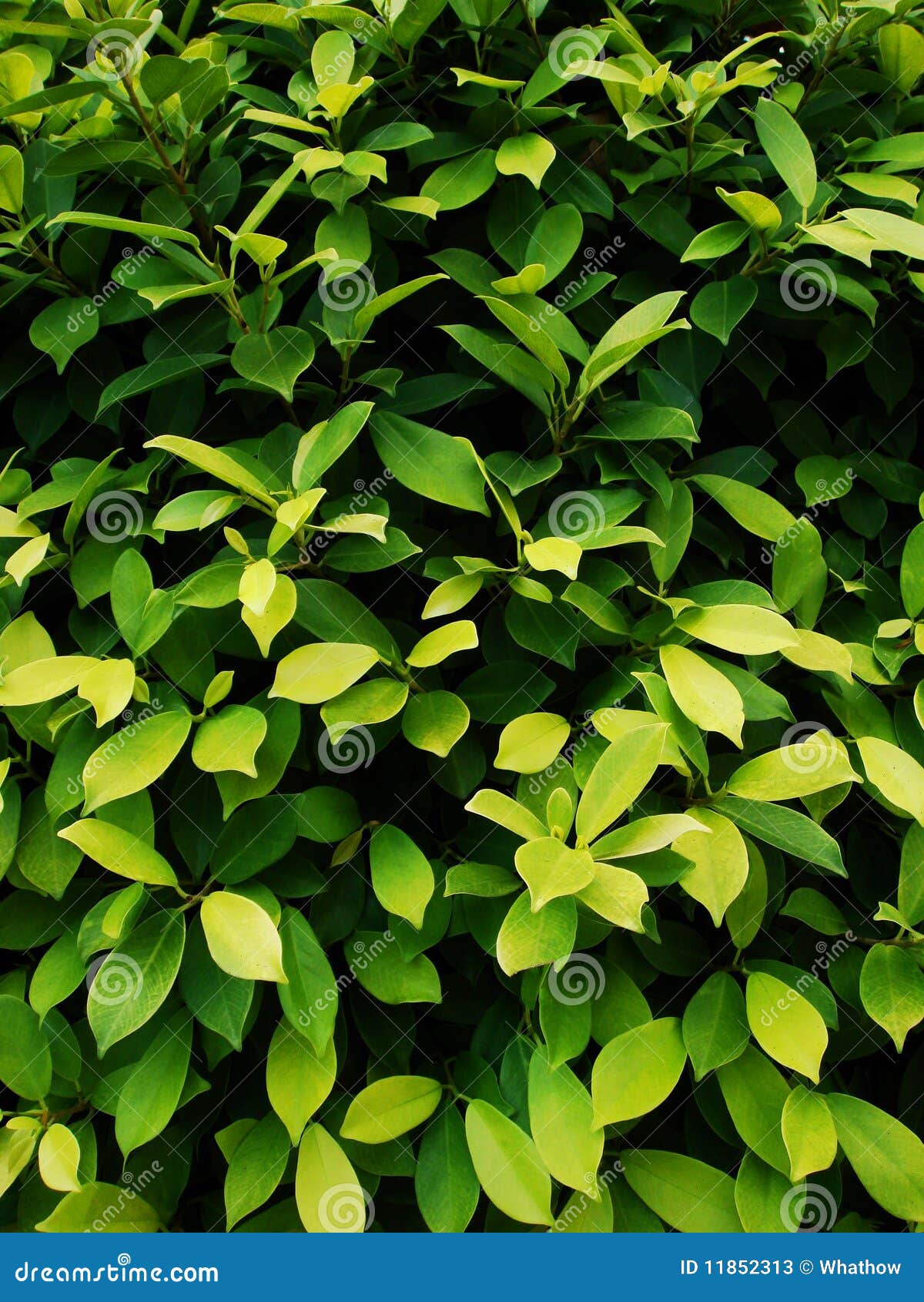The pigments that give leaves their color are called chlorophylls. Chlorophyll a is the most abundant pigment in leaves and it gives them their characteristic green color. However, there are other pigments present in leaves as well, including carotenoids and anthocyanins.
The amount of these other pigments present can cause the leaves to appear yellow, orange, red, or purple.
The leaves on trees and plants are different shades of green because of the presence of a pigment called chlorophyll. Chlorophyll is what gives plants their green coloration and helps them to absorb sunlight for photosynthesis. The amount of chlorophyll present in a leaf can vary, depending on the species of plant, the time of year, and the environment.
For example, leaves may appear greener in the spring when they are first starting to grow, or in shady areas where there is less direct sunlight.
So why do some leaves look more yellow or orange? This is usually due to another pigment called carotene, which is found in lower concentrations in most plants.
Carotene is responsible for giving carrots their orange color, and it can also make leaves appear yellow or orange when it starts to break down chlorophyll as the season changes from summer to fall.

Credit: www.dreamstime.com
Why are Leaves in the Shade Darker Green?
One of the reasons that leaves in the shade are darker green is because they contain more chlorophyll. Chlorophyll is a pigment that helps plants absorb light energy from the sun so that they can convert it into chemical energy to fuel their growth. Leaves in the shade have to work harder to get the same amount of sunlight, so they produce more chlorophyll to make up for it.
Another reason why leaves in the shade are darker green is because they don’t have as much exposure to sunlight. Sunlight bleaches out chlorophyll, so less exposed leaves will retain their color better.
So if you’re looking for a deep green color in your foliage, planting them in shady areas is one way to do it!
Why are Some Leaves Lighter Green Than Others?
There are a few reasons why leaves may be lighter green than others. One reason could be due to the amount of chlorophyll present in the leaves. Chlorophyll is what gives leaves their green color, so if there is less chlorophyll present, the leaves will be lighter green.
Another reason could be that the leaves are getting older and starting to fade in color. As leaves age, they lose pigmentation and chlorophyll, which can cause them to appear lighter green. Finally, some plants have variegated leaves, which means they have patches of different colors on their leaves.
This can include light green along with other colors like yellow or white.
Why Leaves are Green in Color? | Why Do Plants Have Green Leaves?
Why are Leaves Darker on Top And Lighter on Bottom
One of the most interesting things about leaves is that they are often darker on top and lighter on bottom. There are a few reasons for this phenomenon. First, the upper surface of leaves tends to be more exposed to light than the lower surface.
This means that the upper surface is more likely to absorb more light energy, which can cause the leaf to appear darker. Additionally, the pigments in leaves are also typically more concentrated on the upper surface than on the lower surface. This also contributes to the darker appearance of leaves.
Finally, it’s worth noting that not all leaves follow this pattern – some may be lighter on top and darker on bottom due to different environmental factors (such as exposure to sunlight or wind).
Why are Leaves in the Shade Thinner
Leaves in the shade are thinner for a variety of reasons. One reason is that they don’t get as much light as leaves in full sun. This means that they don’t produce as much food for the plant, so the plant doesn’t need to invest as much energy in them.
Additionally, shade leaves are often cooler than those in full sun, which can cause them to be more delicate and prone to breakage. Finally, many plants have evolved to have thinner leaves in shady areas because this helps them conserve water; thicker leaves would lose more water through evaporation.
Why are Leaves Green
Why are leaves green? It’s a question that has puzzled scientists for centuries. But the answer is actually quite simple.
Leaves are green because of a pigment called chlorophyll. This pigment is essential for photosynthesis, the process by which plants convert sunlight into energy.
Interestingly, chlorophyll is not the only pigment found in leaves.
Leaves also contain other pigments, such as carotenoids and anthocyanins. These pigments give leaves their yellow, orange, and red colors. However, chlorophyll masks these colors so that leaves appear mostly green.
So why does chlorophyll make leaves appear green? Chlorophyll absorbs all wavelengths of visible light except green light. Green light is reflected off of the leaf surface and into our eyes, giving us the impression that leaves are green.
Why Do Leaves Change Color in the Fall
The leaves on trees and other plants change color in the fall as a response to shorter days with less sunlight and cooler temperatures. During the summer, leaves produce food for the plant by undergoing photosynthesis, which uses sunlight to convert water and carbon dioxide into oxygen and sugar. In the fall, when days are shorter and there is less sunlight, leaves stop producing food for the plant and begin to prepare for winter.
The chlorophyll in leaves starts to break down, revealing other colors that were present all along but hidden by the green of chlorophyll. These colors include yellow, orange, and red. While different tree species may have leaves of different colors in the fall, these variations are usually due to genetics rather than changes in environment.
Scientific Explanation for Why Leaves are Green in the Summer
It’s no secret that leaves are green in the summer. But why is this? Well, it turns out that there’s a scientific explanation for it.
Leaves are green because of a pigment called chlorophyll. This pigment helps leaves absorb sunlight, which is then used to convert carbon dioxide into oxygen – a process known as photosynthesis. In the summer months, there is more sunlight available for leaves to absorb.
As a result, they produce more chlorophyll, and their leaves appear greener.
So there you have it – the next time someone asks you why leaves are green in the summer, you can tell them it’s all thanks to chlorophyll!
Why are Plants Green Chlorophyll
Why are Plants Green?
Chlorophyll is a green pigment found in plants. It is essential for photosynthesis, which allows plants to convert sunlight into chemical energy that they can use to grow and thrive.
The green color of chlorophyll absorbs light in the blue and red wavelengths, which leaves the yellow and orange wavelengths to be reflected back to our eyes. This is why leaves appear green to us!
Interestingly, chlorophyll molecules are very similar to hemoglobin molecules in our blood.
Both contain a central metal ion (iron in hemoglobin, magnesium in chlorophyll) surrounded by organic ligands. However, the structure of chlorophyll gives it unique properties that make it vital for photosynthesis. For example, its ability to absorb light across a wide range of wavelengths makes it an ideal candidate for capturing energy from sunlight.
Additionally, the electron configuration of the magnesium ion makes it especially receptive to changes in oxidation state – one of the key steps in converting solar energy into useful chemical energy within plants.
So next time you’re admiring a beautiful green plant, remember that its color is thanks to chlorophyll – one of nature’s most important molecules!
Light Green Leaves And Dark Green Leaves
If you were to ask a group of people what their favorite color was, it’s likely that green would be one of the most popular answers. Green is associated with nature, and it has a calming effect. It’s no wonder that so many people love looking at trees and plants!
There are actually two different types of green leaves – light green and dark green. Each type of leaf has its own unique benefits.
Light green leaves are typically softer and more delicate than dark green leaves.
They’re also more susceptible to damage from wind and rain. However, light green leaves are often richer in chlorophyll, which helps them absorb more sunlight for photosynthesis. This makes them ideal for plants that need lots of sunlight, such as sunflowers.
Dark green leaves are tougher and more resilient than light green leaves. They’re less likely to be damaged by wind or rain, and they don’t need as much sunlight to thrive. This makes them ideal for shade-loving plants, such as ferns.
Conclusion
Leaves are different shades of green because they have different amounts of chlorophyll. Chlorophyll is a pigment that helps leaves absorb sunlight for photosynthesis. The more chlorophyll a leaf has, the greener it will be.
Leaves also contain other pigments, such as carotenes and xanthophylls. These pigments can make leaves appear yellow, orange, or brown.




